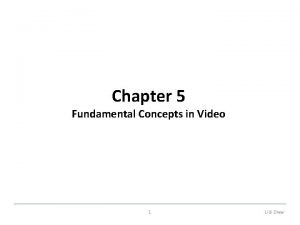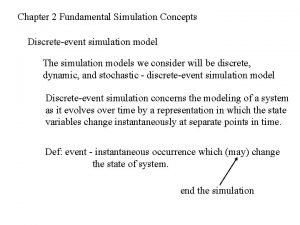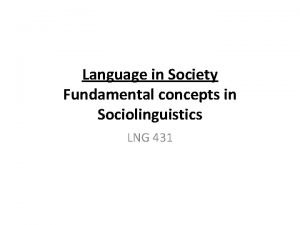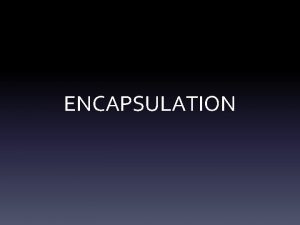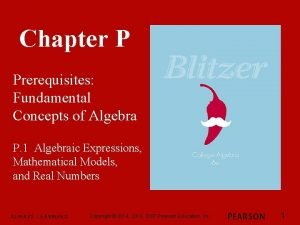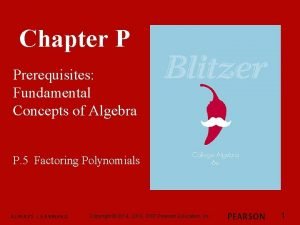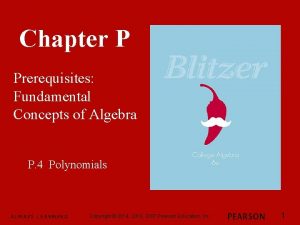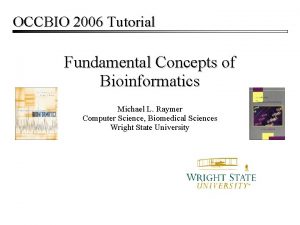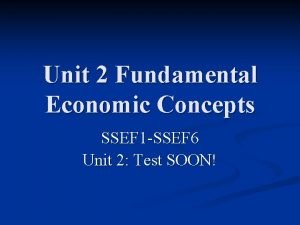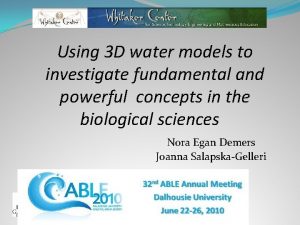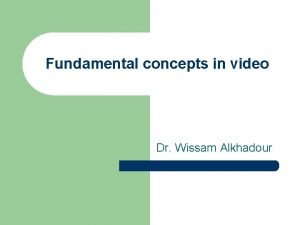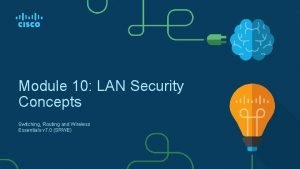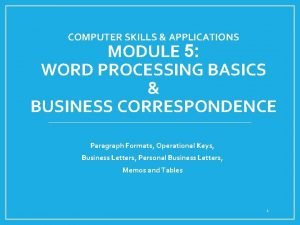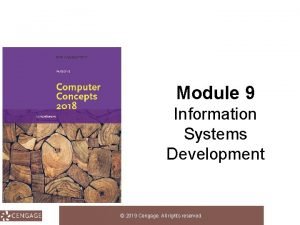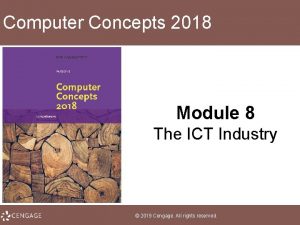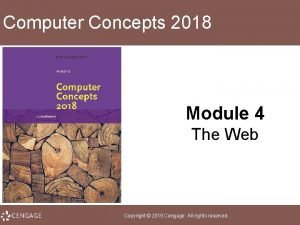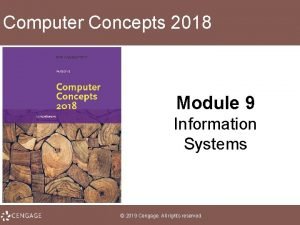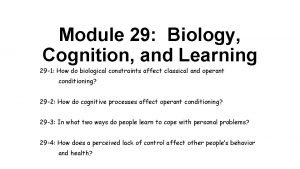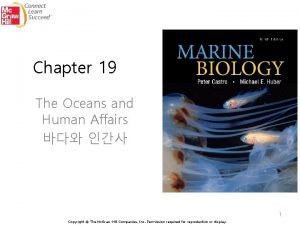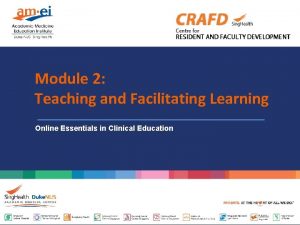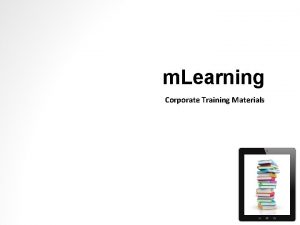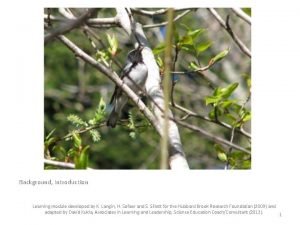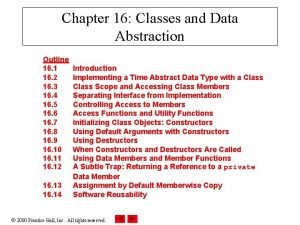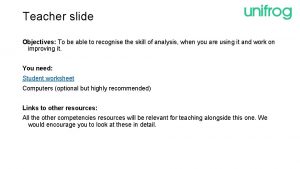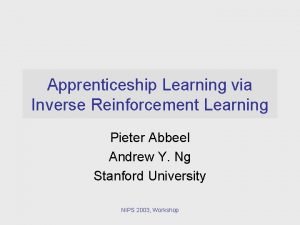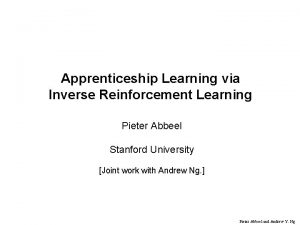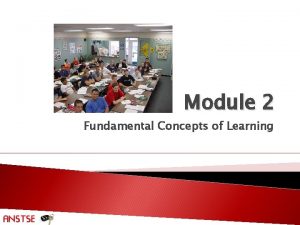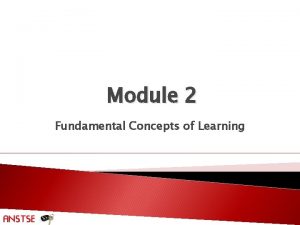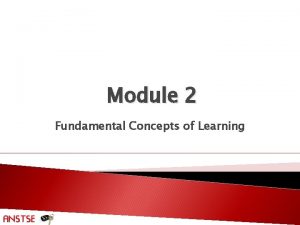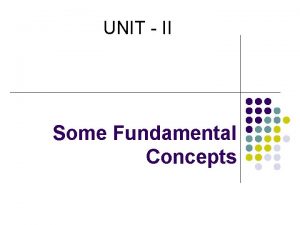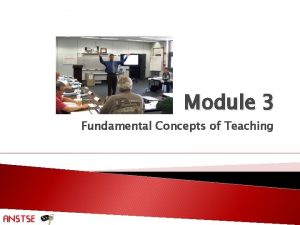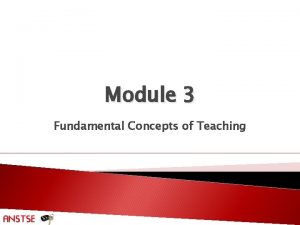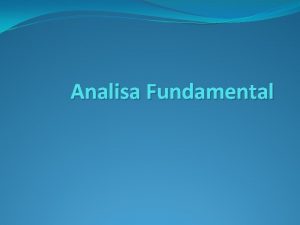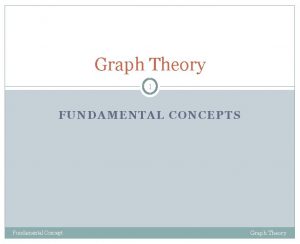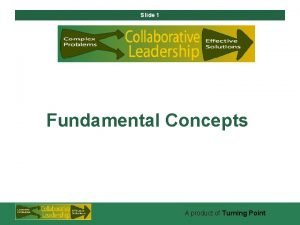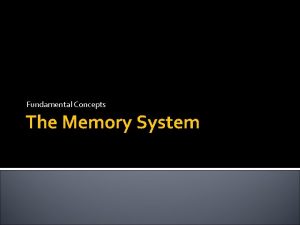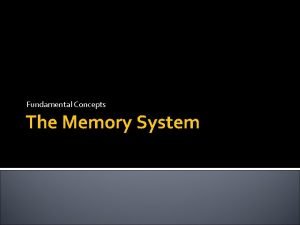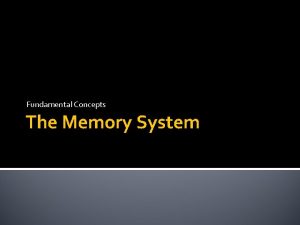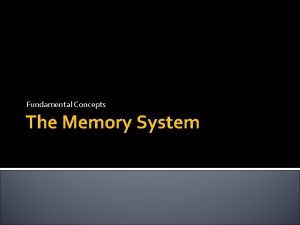Module 2 Fundamental Concepts of Learning Slide 2













































- Slides: 45

Module 2 Fundamental Concepts of Learning

Slide 2 -2 Purpose of the Module � To provide you with an understanding of the fundamental concepts of learning, to discuss various learning preferences, discuss the domains of learning and review the four-step teaching and learning process. Module 2 PW page 2 -2

Slide 2 -3 Module Sections � This ◦ ◦ ◦ Module 2 Module covers five topics: What is learning? Characteristics of teen learners. Learning preferences Domains of learning The four-step teaching and learning process PW page 2 -2

Slide 2 -4 Module Objectives � By the end of this Module, you should be able to: Define learning and its key elements. Identify the characteristics of teen learners. Define three domains of learning. Describe learning as a process that involves sensory activities. ◦ Explain the advantages of using a variety of activities to appeal to learners with different learning preferences. ◦ Define the four steps of teaching and learning. ◦ ◦ Module 2 PW page 2 -2

Slide 2 -5 Activity #1: Learning Assessment Take an online learning preference assessment to determine your learning preference. Module 2 PW page 2 -3

Slide 2 -6 Question What is Learning? Module 2 PW page 2 -4

Slide 2 -7 What is Learning? � Acquiring new knowledge, behaviors, skills. � Accessing information. � An activity involving the senses that affects behavior. PW page 2 -4 Module 2

Slide 2 -8 Key Elements of Learning � Learning involves the modification of � Learning occurs when an individual: behavior. ◦ acquires to do something new, or ◦ improves their performance. Module 2 PW page 2 -4

Slide 2 -9 Key Elements of Learning �Behavior ◦ A person learns only when he or she acquires the ability to do something new or better. ◦ Simply acquiring “facts” is not learning. ◦ Learning involves the ability to apply or use the “facts. ” Module 2 PW page 2 -4

Slide 2 -10 Key Elements of Learning �Purposeful sensory activities ◦ The learner’s activities are directed toward the behavior to be acquired. ◦ The activities are free of distractions. ◦ The learner participates fully in the activities. Module 2 PW page 2 -4

Slide 2 -11 Question Name the 5 Senses Module 2 PW page 2 -4

Slide 2 -12 Key Elements of Learning �Senses ◦ A person only learns through his or her senses. ◦ The more senses that are involved in learning experiences, the more efficiently the person will learn. ◦ All learners must participate to their ability. Module 2 PW page 2 -4

Slide 2 -13 Senses Used in Learning � Some people learn best through hearing. � Some people learn best through seeing. � Some people learn best through touching/feeling. Module 2 PW page 2 -5

Slide 2 -14 Senses Used in Learning � Each class is different in the percentages used and the needs of the learners. � The best way to reach 100% of learners every time you teach is to enhance their learning by using a combination of senses. � The more senses involved in the learning, the more complete and efficient the learning experience. Module 2 PW page 2 -5

Slide 2 -15 Activity #2: Senses Used in Learning Determine what sense you learn best through and why. Determine how the way you learn will impact the way you teach. Module 2 PW page 2 -5

Slide 2 -16 Types of Learning Preferences Module 2 PW page 2 -6

Slide 2 -17 Question What is Your Learning Preference? Module 2 PW page 2 -6

Slide 2 -18 Activity #3: Determining Learning Preference Make the “thumbs up” sign. Module 2 PW page 2 -7

Slide 2 -19 The Learner’s Job �The learner’s job is to: ◦ Participate in classroom discussion ◦ Participate as fully as possible in the planned learning activities Module 2 PW page 2 -7

Slide 2 -20 Activity #4: Using the Four Learning Preferences Complete Activity in Participant Workbook Module 2 PW page 2 -8

Slide 2 -21 The Domains of Learning �There are three general kinds of things that people can learn. ◦ Acquire knowledge ◦ Form or adjust attitudes ◦ Develop or improve skills Module 2 PW page 2 -9

Slide 2 -22 The Domains of Learning Ø Cognitive Domain = Knowledge (other terms: Concepts, facts, information, principles) Ø Affective Domain = Attitudes (other terms: Opinions, values, beliefs, outlooks, feelings/emotions) Ø Psychomotor Domain = Skills (other terms: Operations, procedures, talents) Module 2 PW page 2 -9

Slide 2 -23 Question Does Teaching Require all 3 Domains? Module 2 PW page 2 -9

Slide 2 -24 The Domains of Learning �For learning to take place all three domains must be utilized. Module 2 PW page 2 -9

Slide 2 -25 The Domains of Learning �Verbal symbols alone are the least effective! �Visual symbols alone are just slightly better, but still insufficient. Module 2 PW page 2 -10

Slide 2 -26 The Domains of Learning �Visual symbols combined with verbal symbols are much more efficient. �Visual and verbal symbols combined with hands-on involvement by the learners is approaching maximum achievement. Module 2 PW page 2 -10

Slide 2 -27 The Domains of Learning � Therefore, the best way to meet the needs of 100% of the audience is to involve as many of the senses as possible. Module 2 PW page 2 -10

Slide 2 -28 Activity #5: Domains of Learning Complete Activity in Participant Workbook Module 2 PW page 2 -11

Slide 2 -29 Characteristics of Teen Learners ◦ ◦ ◦ ◦ Module 2 Self-conscious Defensive often Curious Moody Know-it-all Narrow minded Does not know self Peer oriented/pressure Individual identity Freedom Insensitive about others Unique Need guidance and praise PW page 2 -12

How to Apply Characteristics of Teenagers to the Classroom � Good Slide 2 -30 for learning and acquiring skills. � Teen communication with friends creates distractions to learning. � Lessons should be very interesting and motivating. � Boring lessons cause discipline problems, missing classes and loss of interest. Module 2 PW page 2 -13

How to Apply Characteristics of Teenagers to the Classroom � Critiquing Slide 2 -31 should be done in a friendly manner. � Instructors should praise achievements and progress. � Teens learn best when they are truly engaged in what they are learning. Module 2 PW page 2 -13

Slide 2 -32 The Four-Step Process of Teaching and Learning 1. Motivation (overview or introduction) 2. Presentation 3. Application 4. Evaluation Module 2 PW page 2 -14

Slide 2 -33 1. Motivation (overview or introduction) � Getting learn. the learner in a state of readiness to ◦ Objectives ◦ Benefits ◦ Expectations and Activities Module 2 PW page 2 -14

Slide 2 -34 Key Points Concerning Motivation Learners: � want to be informed of what is going to happen. � need to know what they are going to be able to do. � who are not informed of the purpose or objectives will be confused and distracted. Module 2 PW page 2 -14

Slide 2 -35 2. Presentation � Showing the learner what it is that he or she will learn. ◦ Facts, concepts, principles. ◦ Basis and reasons for the attitudes to be formed. ◦ Skills to be acquired. Module 2 PW page 2 -15

Slide 2 -36 Key Points Concerning Presentation � Show what they are supposed to learn. � Instructor must know the facts to be covered and apply it to the task. � Convey and exhibit the attitudes that he or she wishes the learner to form. � Explain and demonstrate how the skill is to be performed. Module 2 PW page 2 -15

Slide 2 -37 3. Application � The learner practices and applies the new learning. ◦ Cognitive - ask questions about the facts being presented. ◦ Affective - question the attitudes and their factual basis and relate to personal experiences. ◦ Psychomotor - perform the skill. Module 2 PW page 2 -16

Slide 2 -38 Key Points Concerning Application � Central step in the process. � Requires � Ensure the highest level on the part of the learner. that all learners actually do become involved. � Instructor Module 2 serves as a coach and moderator. PW page 2 -16

Slide 2 -39 4. Evaluation � Determining has learned. how well the learner is learning or ◦ Knowledge: Does he or she understand the concepts, facts, and principles presented? ◦ Attitude: Does he or she hold the opinions and beliefs that the instructor has attempted to foster? ◦ Skill: Can he or she perform in the proper way, as instructed? Module 2 PW page 2 -17

Slide 2 -40 Key Points Concerning Evaluation � Evaluation cannot be put off until the very end of the scheduled training. � Evaluation must occur throughout the training. ◦ Evaluation during and following motivation. ◦ Evaluation during and following presentation. ◦ Evaluation during and following application. Module 2 PW page 2 -17

Slide 2 -41 The Learner’s Perspective 1. Motivation: “Why should I learn? ” 2. Presentation: “What should I learn? ” 3. Application: “Let me do it! 4. Evaluation: “How am I doing? ” Module 2 PW page 2 -17

Slide 2 -42 Module Summary � With the conclusion of this Module, you should be able to: Define learning and its key elements. Identify the characteristics of teen learners. Define three domains of learning. Describe learning as a process that involves sensory activities. ◦ Explain the advantages of using a variety of activities to appeal to learners with different learning preferences. ◦ Define the four steps of teaching and learning. ◦ ◦ Module 2 PW page 2 -18

Slide 2 -43 Questions and Answers 1. 2. 3. 4. Module 2 What are some of the key points about learning? Why? What are three domains of learning? Which is the most difficult for us to affect as instructors? What are the 4 steps in the teaching and learning process? When do we evaluate? PW page 2 -18

Slide 2 -44 Module Review Activity: Key Words Matchup Complete the Activity in the Participant Workbook. Module 2 PW page 2 -19

Slide 2 -45 Questions? ? Module 2
 Heel and toe polka dance steps
Heel and toe polka dance steps Fundamental concepts in video
Fundamental concepts in video Basic concepts of simulation
Basic concepts of simulation Fundamental concepts in managerial economics
Fundamental concepts in managerial economics Sociolinguistics examples
Sociolinguistics examples Four fundamental oop concepts
Four fundamental oop concepts Prerequisites fundamental concepts of algebra
Prerequisites fundamental concepts of algebra Chapter p prerequisites fundamental concepts of algebra
Chapter p prerequisites fundamental concepts of algebra Chapter p prerequisites fundamental concepts of algebra
Chapter p prerequisites fundamental concepts of algebra Occbio
Occbio Ssef price list
Ssef price list Fundamental and powerful concepts
Fundamental and powerful concepts Time perspective in managerial economics
Time perspective in managerial economics Fundamental concepts in video
Fundamental concepts in video Lan security concepts
Lan security concepts Word processing packages
Word processing packages Module 9 computer concepts
Module 9 computer concepts Module 9 computer concepts exam
Module 9 computer concepts exam Copyright search
Copyright search Module 9 computer concepts
Module 9 computer concepts Cuadro comparativo e-learning m-learning b-learning
Cuadro comparativo e-learning m-learning b-learning C device module module 1
C device module module 1 Slide divide slide
Slide divide slide Learning: module 26: magnetic forces and fields
Learning: module 26: magnetic forces and fields Icicibank learning matrix
Icicibank learning matrix Module 29 biology cognition and learning
Module 29 biology cognition and learning Learning: module 2: section 19_03-19_05
Learning: module 2: section 19_03-19_05 Facilitating learning module 2
Facilitating learning module 2 Corporate training materials
Corporate training materials Iec e learning module 1
Iec e learning module 1 Iec e learning module 3
Iec e learning module 3 Iec e learning module 1
Iec e learning module 1 Learning module background
Learning module background Learning: module 4: section 16_07-16_08
Learning: module 4: section 16_07-16_08 Unifrog competencies examples
Unifrog competencies examples Supervised learning dan unsupervised learning
Supervised learning dan unsupervised learning Concept learning task in machine learning
Concept learning task in machine learning Analytical learning in machine learning
Analytical learning in machine learning Example of non associative learning
Example of non associative learning Eager learning vs lazy learning
Eager learning vs lazy learning What is conceptual learning
What is conceptual learning Inductive vs analytical learning
Inductive vs analytical learning Apprenticeship learning via inverse reinforcement learning
Apprenticeship learning via inverse reinforcement learning Apprenticeship learning via inverse reinforcement learning
Apprenticeship learning via inverse reinforcement learning Inductive vs deductive reasoning
Inductive vs deductive reasoning Pac learning model in machine learning
Pac learning model in machine learning

